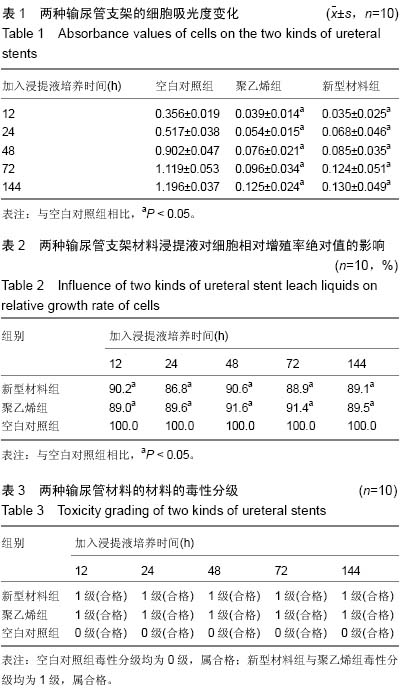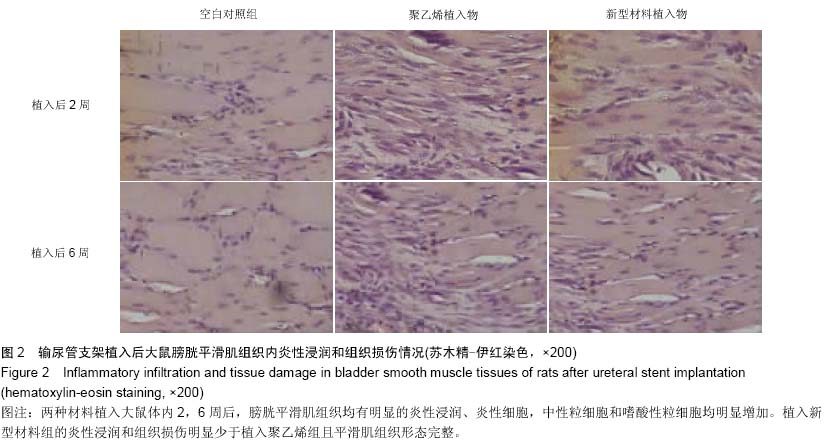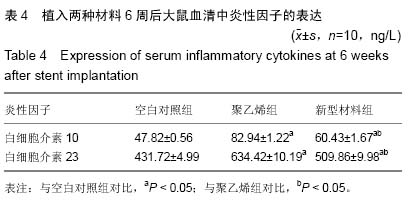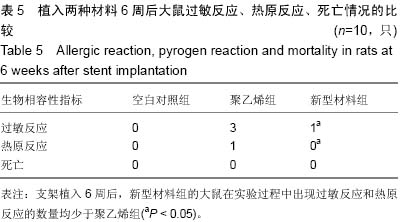| [1] Demanes DJ, Banerjee R, Cahan BL, et al. Ureteral stent insertion for gynecologic interstitial high-dose-rate brachytherapy. Brachytherapy. 2015;14(2):245-251.
[2] Lange D, Bidnur S, Hoag N, et al. Ureteral stent-associated complications--where we are and where we are going. Nat Rev Urol. 2015;12(1):17-25.
[3] Kumar S, Shankaregowda SA, Devana SK, et al. Single-incision multiport laparoendoscopic technique to repair retrocaval ureter using the Santosh PGI ureteric tacking fixation technique. Asian J Endosc Surg. 2014;7(4):337-341.
[4] Halder P, Shukla RM, Mandal KC, et al. Double obstruction of ureter: a diagnostic challenge. J Indian Assoc Pediatr Surg. 2014;19(3):129-132.
[5] Wang J, Feng J, Hu W, et al. Preclinical evaluation of a newly designed ureteral stent and magnetic retrieval catheter for minimally invasive stent removal. Urology. 2014;84(4): 960-966.
[6] You JH, Kim YG, Kim MK. Should we place ureteral stents in retroperitoneal laparoscopic ureterolithotomy? Consideration of surgical techniques and complications. Korean J Urol. 2014; 55(8):511-514.
[7] Loh-Doyle JC, Low RK, Monga M, et al. Patient experiences and preferences with ureteral stent removal. J Endourol. 2015; 29(1):35-40.
[8] Selli C, Turri FM, Gabellieri C, et al. Delayed-onset ureteral lesions due to thermal energy: an emerging condition. Arch Ital Urol Androl. 2014;86(2):152-153.
[9] Zou T, Wang L, Li W, et al. A resorbable bicomponent braided ureteral stent with improved mechanical performance. J Mech Behav Biomed Mater. 2014;38:17-25.
[10] Manabe N, Kirikoshi R, Takahashi O. Glycolic Acid-Catalyzed Deamidation of Asparagine Residues in Degrading PLGA Matrices: a Computational Study. Int J Mol Sci. 2015;16(4): 7261-7272.
[11] Yada S, Terakawa M. Femtosecond laser induced periodic surface structure on poly-L-lactic acid. Opt Express. 2015;23(5):5694-5703.
[12] Huang D, Li D, Wang T, et al. Isoniazid conjugated poly(lactide-co-glycolide): Long-term controlled drug release and tissue regeneration for bone tuberculosis therapy. Biomaterials. 2015;52:417-425.
[13] Manassero F, Ortori S, Gabellieri C, et al.An unusual case of intrarenal coiled and ruptured guidewire. Arch Ital Urol Androl. 2015;87(1):90-92.
[14] Adanur S, Aydin HR, Ozkaya F, et al. Holmium laser lithotripsy with semi-rigid ureteroscopy: a first-choice treatment for impacted ureteral stones in children? Med Sci Monit. 2014;20: 2373-239.
[15] Park HK, Paick SH, Kim HG, et al. The impact of ureteral stent type on patient symptoms as determined by the ureteral stent symptom questionnaire: a prospective, randomized, controlled study. J Endourol. 2015;29(3):367-371.
[16] García-Aparicio L, Blázquez-Gómez E, Martin O, et al. Bacterial characteristics and clinical significance of ureteral double-J stents in children. Actas Urol Esp. 2015;39(1): 530-536.
[17] Vogt B, Desgrippes A, Desfemmes FN. Pigtail suture stent: decisive progress towards double-pigtail stent tolerance and unexpected properties of the suture in the ureter. Prog Urol. 2014;24(7):441-450.
[18] Georgescu D, Mul?escu R, Geavlete B, et al. Ureteroscopy-first-line treatment alternative in ureteral calculi during pregnancy? Chirurgia (Bucur). 2014;109(2):229-232.
[19] Shaheen T, Edirisinghe T, Gabriel M, et al. In vitro encrustation of a semi-permanent polymer-covered nitinol ureter stent: an artificial urine model. Urolithiasis. 2014; 42(3):203-207.
[20] Choi H, Kim JH, Park JY, et al. A modified laparoscopic ureterolithotomy by pulling ureter with Carter-Thomason fascial closure and ureter incision by broken 15th blade. Scand J Surg. 2014;103(3):195-200.
[21] Chung HH, Kim MD, Won JY et al. Multicenter experience of the newly designed covered metallic ureteral stent for malignant ureteral occlusion: comparison with double J stent insertion. Cardiovasc Intervent Radiol. 2014;37(2):463-470.
[22] Beraldo S, Neubeck K, Von Friderici E, et al.The prophylactic use of a ureteral stent in laparoscopic colorectal surgery. Scand J Surg. 2013;102(2):87-89.
[23] Rabani SM. Combined percutaneous and transurethral lithotripsy for forgotten ureteral stents with giant encrustation. Nephrourol Mon. 2012;4(4):633-635.
[24] Lock JY, Wyatt E, Upadhyayula S, et al. Degradation and antibacterial properties of magnesium alloys in artificial urine for potential resorbable ureteral stent applications. J Biomed Mater Res A. 2014;102(3):781-792.
[25] Pettenati C, El Fegoun AB, Hupertan V et al. Double J stent reduces the efficacy of extracorporeal shock wave lithotripsy in the treatment of lumbar ureteral stones. Cent European J Urol. 2013;66(3):309-313.
[26] Roy N, Waingankar S, Aggarwal G.Assessment of bio-safety of low-cost polyurethane urologic stents used in developing countries. Indian J Urol. 2012;28(2):184-188.
[27] Kawahara T, Ito H, Terao H, et al. Changing to a loop-type ureteral stent decreases patients' stent-related symptoms. Urol Res. 2012;40(6):763-767.
[28] Ulvik O, Ulvik NM. Diversity in urologists' personal preferences in the ureteroscopic management of ureteral calculi in Norway. Scand J Urol. 2013;47(2):126-130.
[29] Coccolini F, Lotti M, Manfredi R, et al. Ureteral stenting in cytoreductive surgery plus hyperthermic intraperitoneal chemotherapy as a routine procedure: evidence and necessity. Urol Int. 2012;89(3):307-310.
[30] Vahidi B, Fatouraee N. A biomechanical simulation of ureteral flow during peristalsis using intraluminal morphometric data. J Theor Biol. 2012;298:42-50.
[31] Greaves NS, Iqbal SA, Hodgkinson T, et al. Skin substitute-assisted repair shows reduced dermal fibrosis in acute human wounds validated simultaneously by histology and optical coherence tomography. Wound Repair Regen. 2015.
[32] Barygina V, Becatti M, Lotti T, et al. Treatment with low-dose cytokines reduces oxidative-mediated injury in perilesional keratinocytes from vitiligo skin. J Dermatol Sci. 2015.
[33] Aziz S, Ahmed SS, Ali A, et al. Salivary immunosuppressive cytokines IL-10 and IL-13 are significantly elevated in oral squamous cell carcinoma patients. Cancer Invest. 2015.
[34] Peng Z, Chen W, Wang L, et al. Inhalation of hydrogen gas ameliorates glyoxylate-induced calcium oxalate deposition and renal oxidative stress in mice. Int J Clin Exp Pathol. 2015 Mar 1;8(3):2680-2689.
[35] Nielsen KR, Steffensen R, Haunstrup TM, et al. Inherited variation in immune response genes in follicular lymphoma and diffuse large b-cell lymphoma. Leuk Lymphoma. 2015: 1-66.
[36] Kulcsar KA, Baxter VK, Abraham R, et al. Distinct immune responses in resistant and susceptible strains of mice during neurovirulent alphavirus encephalomyelitis. J Virol. 2015.
[37] Ampel NM, Nesbit LA, Nguyen CT, et al. Cytokine profiles from antigen-stimulated whole blood samples among patients with pulmonary and non-meningeal disseminated coccidioidomycosis. Clin Vaccine Immunol. 2015.
[38] Cardoso CP, Oliveira AJ, Botoni FA, et al. Interleukin-10 rs2227307 and CXCR2 rs1126579 polymorphisms modulate the predisposition to septic shock. Mem Inst Oswaldo Cruz. 2015.
[39] Xiong J, Wang Y, Zhang Y, et al. Lack of Association between interleukin-10 gene polymorphisms and graft rejection risk in kidney transplantation recipients: a meta-analysis.PLoS One. 2015;10(6):e0127540.
[40] Santer P, Pejo E, Feng Y, et al. Cyclopropyl-methoxycarbonyl Metomidate: Studies in a Lipopolysaccharide Inflammatory Model of Sepsis. Anesthesiology. 2015. |




.jpg)